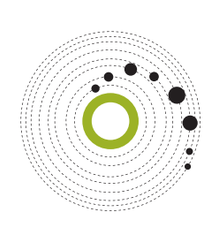
Open lecture
Forever confined but asymptotically/ Secrets of nucleons
prof. ANNA STAŚTO
Penn State University, USA
Dec. 6, 2021, 4:30 p.m.
on-line, Zoom
The next Jerzy Pniewski and Leopold Infeld Colloquium of the Faculty of Physics will be held on Monday 6th of December at 4.30 pm. This time our meeting will be exclusively ONLINE. Our guest will be:
prof. ANNA STAŚTO (Penn State University, USA), who will give a lecture:
"Forever confined but asymptotically free"
After the Hamburg-based HERA accelerator, which collided electron and ion beams, was terminated in 2007, the idea of creating a similar, but more powerful, accelerator in the US emerged. In 2015, the US Department of Energy's Nuclear Science Advisory Committee approved the idea and allocated funds (around 2 billion USD) for its construction. Construction work officially began last year. Prof. Staśto's lecture will familiarise us with the state of knowledge regarding the structure and interactions within nucleons, as well as the cognitive perspectives offered by the newly built accelerator.
For informal discussions, please join us from 4 p.m.
Link: https://us02web.zoom.us/j/93881687598?pwd=UmFhVUdVSXhnQ2tIVVozNmowSUNtZz09
Meeting ID number: 938 8168 7598
Access code: prv316
With best regards,
Barbara Badełek
Jan Chwedeńczuk
Jan Kalinowski
Jan Suffczyński
PS. The next Conversation will take place on 17 January 2022.
prof. ANNA STAŚTO (Penn State University, USA)
"Forever confined but asymptotically free"
The strong interaction is one of the four known forces in nature. It is responsible for the creation of nuclei and for binding quarks into nucleons. Two intriguing phenomena characterize the strong interaction which is confinement and asymptotic freedom. The complexity of strong interaction leads to the richness of the nucleon structure which can be best explored in the high energy electron-nucleon collisions. In this talk, I will discuss what we know about the nucleon structure as well as the prospects of expanding our knowledge about strong interactions through the new accelerator facility, Electron Ion Collider (EIC) in the US.
